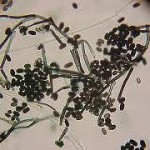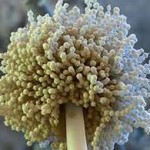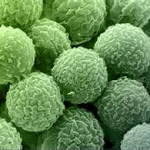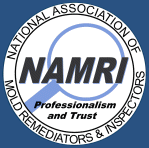Facts about Mold in your Home or Business
What is mold?
Mold (fungi) is present everywhere – indoors and outdoors. There are more than 100,000 species of mold. At least 1,000 species of mold are common in the U.S. Some of the most commonly found are species of Cladosporium, Penicillium, and Aspergillus.
Where is it found?
Mold is most likely to grow where there is water or dampness – such as in bathrooms and basements. There are molds that can grow on wood, paper, carpet, and foods. When excessive moisture or water accumulates indoors, mold growth will often occur, particularly if the moisture problem remains undiscovered or un-addressed.
What are some of the different types of mold?
Aspergillus is a cosmopolitan fungus with worldwide distribution. Aspergillus is often isolated from soil and plant materials, particularly in tropical and sub-tropical regions. Aspergillus spores are generally air dispersed.
Cladosporium is a ubiquitous fungus with worldwide distribution. It is commonly isolated from soil, plant debris, leaf surfaces, textiles, food, lumber and other building materials, and is often the most frequently isolated mold in air samples from both indoor and outdoor environments.
Penicillium species are most commonly found in soils, cellulose materials (plants, wood, paper, etc.), foods, grains, and compost piles. Indoors Penicillium can be associated with carpet, wallpaper, organic substances, and is also known to grow within fiberglass duct insulation.
Stachybotrys species are commonly isolated from soil and decaying plant material. Stachybotrys is highly cellulolytic. Indoors it is commonly isolated from water-damaged materials, including wallpaper backing and drywall elements.
How can mold affect your health?
Most types of mold that are routinely encountered are not hazardous to healthy individuals. However, too much exposure to mold may cause or worsen conditions such as asthma, hay fever, or other allergies. The most common symptoms of overexposure are cough, congestion, runny nose, eye irritation, and aggravation of asthma. Depending on the amount of exposure and a person’s individual vulnerability, more serious health effects – such as fevers and breathing problems – can occur but are unusual.
How can you be exposed to mold?
When moldy material becomes damaged or disturbed, spores (reproductive bodies similar to seeds) can be released into the air. Exposure can occur if people inhale the spores, directly handle moldy materials, or accidentally ingest it. Also, mold can sometimes produce chemicals called mycotoxins. Mycotoxins may cause illness in people who are sensitive to them or if they are exposed to large amounts in the air. Large exposures are typically associated with certain occupations (e.g., agricultural work).
How does mold grow?
All molds need water to grow. Mold can grow almost anywhere there is water damage, high humidity, or dampness. Most often molds are confined to areas near the source of water. Removing the source of moisture – such as through repairs or dehumidification – is critical to preventing mold growth.
What is Stachybotrys chartarum?
Stachybotrys chartarum (also known as Stachybotrys atra) is a type of mold that has been associated with health effects in people. It is a greenish-black mold that can grow on materials with a high cellulose content – such as drywall sheetrock, dropped ceiling tiles, and wood – that become chronically moist or water-damaged, due to excessive humidity, water leaks, condensation, or flooding. How can you tell if Stachybotrys chartarum is present in your home?
Many molds are black in appearance but are not Stachybotrys. For example, the black mold commonly found between bathroom tiles is not Stachybotrys. Stachybotrys can be positively identified only by specially trained professionals (e.g., mycologists) through a microscopic exam.
How can Stachybotrys chartarum affect your health?
Typically, indoor air levels of Stachybotrys are low; however, as with other types of mold, at higher levels health effects can occur. These include allergic rhinitis (cold-like symptoms), dermatitis (rashes), sinusitis, conjunctivitis, and aggravation of asthma. Some related symptoms are more general – such as inability to concentrate and fatigue. Usually, symptoms disappear after the contamination is removed. There has been some evidence linking Stachybotrys with pulmonary hemosiderosis in infants who are generally less than six months old. Pulmonary hemosiderosis is an uncommon condition that results from bleeding in the lungs. In studied cases of pulmonary hemosiderosis, the exposure to Stachybotrys came from highly contaminated dwellings, where the infants were continually exposed over a long period of time.
What should you do if mold is present in your home or apartment?
Although any visible mold can be sampled by an environmental consultant and/or analyzed by a laboratory specializing in microbiology, these tests can be very expensive – from hundreds to thousands of dollars. There is no simple and cheap way to sample the air in your home to find out what types of mold are present and whether they are airborne. Even if you have your home tested, it is difficult to say at what levels health effects would occur. Therefore, it is more important get rid of the mold rather than find out more about it. The most effective way to treat mold is to correct underlying water damage and clean the affected area.
How should mold be cleaned?
Mold should be cleaned as soon as it appears. Persons cleaning mold should be free of symptoms and allergies. Small areas of mold should be cleaned using a detergent/soapy solution or an appropriate household cleaner. Gloves should be worn during cleaning. The cleaned area should then be thoroughly dried. Dispose of any sponges or rags used to clean mold. If the mold returns quickly or spreads, it may indicate an underlying problem such as a leak. Any underlying water problems must be fixed to successfully eliminate mold problems. If mold contamination is extensive, a professional abatement company may need to be consulted.
Will my health or my child’s health be affected, and should we see a physician?
If you believe that you or your children have symptoms that you suspect are caused by exposure to mold, you should see a physician. Keep in mind that many symptoms associated with mold exposure may also be caused by many other illnesses. You should tell your physician about the symptoms and about when, how, and for how long you think you or your children were exposed.
For More Information on Mold,please use the resources below:
CDC: http://www.cdc.gov/mold/faqs.htm
EPA : http://www.epa.gov/iaq/molds/moldguide.html





